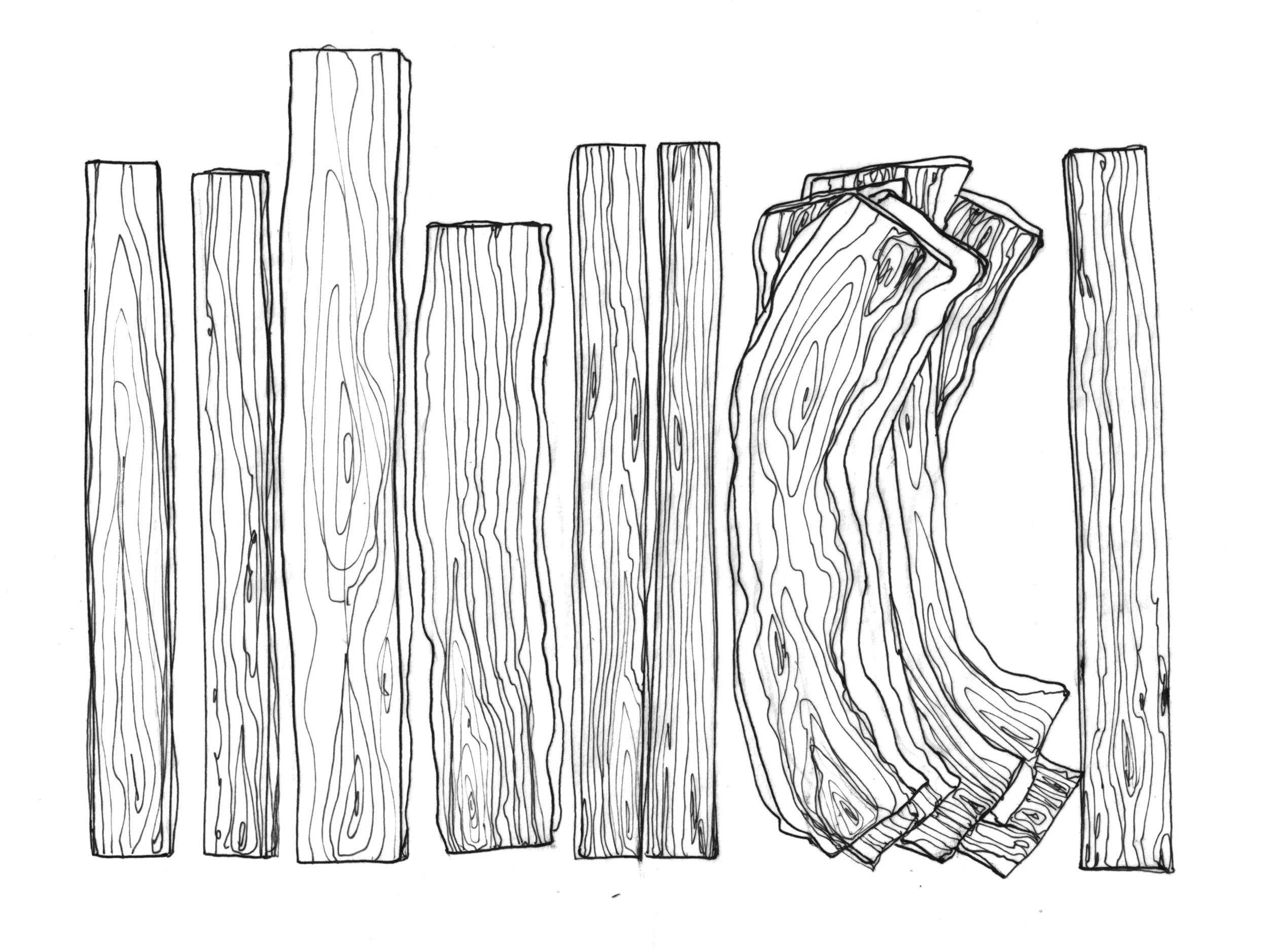THE CIRCLE:
A RESTORATIVE PROCESS
This MFA Thesis project, inspired by SDSU’s newly-established Office for Restorative Practices, creates a new built environment to promote Circular Dialogue on campus. The Circle was supported and funded by the SDSU College of Graduate Studies in collaboration with the division of Research and Innovation, Arts Alive SDSU and the School of Art and Design. Each of the 5 custom-designed and custom-made curved benches was built within my open studio at the SDSU Furniture Design & Woodworking Shop.
The Circular Dialogue Design was inspired by learning of Restorative Justice practices with Dr. Daniel Stacy in the Department of Criminal Justice. I studied with Dr. Stacy to support the classes I lead with the Prison Arts Collective at Richard J. Donovan Correctional Facility each week. The Prison Arts Collective was founded by Professor Annie Buckley, and is based here in the SDSU School of Art and Design. Throughout Dr. Stacy’s course, my peers majoring in Criminal Justice and I learnt about the recent renaissance in First Nation-pedagogical Circular Dialogues. Conversations conducted in circles are a collective-focused learning tool that supports mutually respectful, emotional, experiential, and co-creational learning. It is a leading practice in Restorative Justice for its’ efficacy in conflict resolution, recovery, personal, and collective growth. Assistant Director of the SDSU Native Resource Center, Professor Jennifer Clay, wrote warmly of the ‘Sacred Circle as a universal system across all identities.’ The yin and yang-adorned concrete foundation for the benches further supports that.
The original intention of the project was to create a welcoming space on campus for citizens considering the possibility of education on re-entry. I heard Dr. Alan Mobley, Founder of SDSU’s Project Rebound, speak of how crucial it is to make an easeful and guided experience of entering the academic environment. For people with previous barriers to learning, I feared that navigating our campus could further add to that.
SDSU, alongside the University of California Irvine, is a leading university in providing opportunities to these communities. Near the proposed PSFA location, there are currently bases for Project Rebound, the Prison Arts Collective, and the growing Institute for Arts, Humanities, and Social Justice. I was surprised to experience that our different organizations rarely cross-pollinate. I saw the opportunity for our further collaboration and thus, this project and my process is two-part. Part 1 was to build a physical environment and, Part 2 was just as crucially, to host an opening, community-building event where I hope we might all meet. I hope people might take the opportunity to join our community mailing lists and we could all grow broader readily-available communities of support and collaboration. I consider any connections or friendships made throughout the project a success.
With ongoing learning, I hope that the space will benefit any community member at the SDSU campus. A space dedicated to Circular Dialogue puts SDSU’s statement of diversity, equity, and inclusion in action and its’ outdoor location demonstrates how the classroom environments we create can permeate. It is my belief that by building something tangible, I could translate SDSU’s research and mission into a part of everyday campus life.
The hope to create furniture for re-entering citizens was informed by a plentitude of institutional furniture that is still being created by people experiencing incarceration. Alongside my involvement with rehabilitative Art programming, I am researching the efficacy of Cal-PIA in vocational education and furniture manufacturing inside California’s Correctional Facilities. It is my understanding that most Californians have taken a seat in this furniture, unaware of the labor force behind it. I hope to shine a light on these fellow makers, and offer them some more generous, comfortable seating when they are out.
The design of the benches was inspired by the iconic benches on campus built in the 1930s by the Works Progress Administration. Working with the sides, rich in historic patina and still strong with internal rebar structures, I was able to experience a touch of American craft history in restoring and working with them. Their eroding layers of paint, their heavy immovability, and their cracks describe and deepen ongoing questions I have of fair labor practice, job creation and equitable occupation of land and public space. Upon communication with SDSU Art Historian and Anthropologist Dr. Seth Mallios, and the head of SDSU Facilities Services Daryn Ockey and their Project Managers, we are still currently trying to locate the original WPA molds apparently still hidden here on campus.
To build the benches, I used my traditional craft education in Advanced Cabinetmaking to machine and hand tool together the White Oak seats, and that’s where my good intentions, I hope, are most acutely showcased. When I shared the original idea with Yudan Wang and Dr. Lilian Cheng at the Chinese Cultural Center, they generously shared tea with me, recognized my appreciation for traditional Chinese Joinery, and invited all of these organizations into their aligned space. For a space of intersection, the Chinese Cultural Center and their Yin and Yang philosophical foundation makes the most gracious host.
Going forward from here, it is my hope that this location may be a trial for many that could pop up around the SDSU campus, and in further universities beyond.





